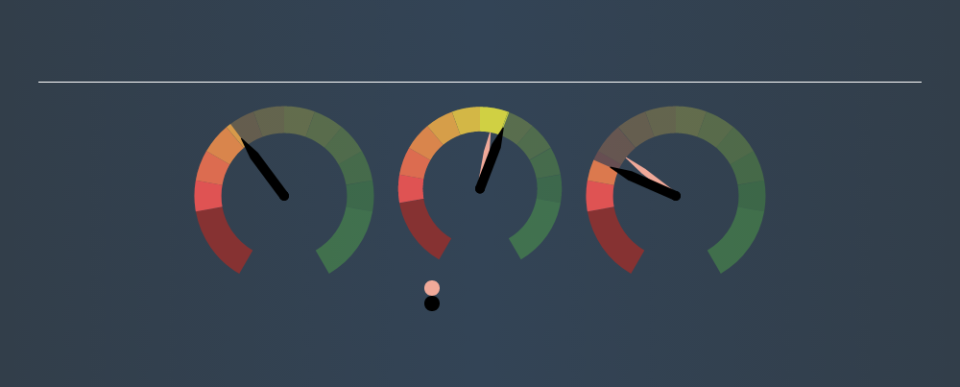Here’s What Avista Corporation’s (NYSE:AVA) Return On Capital Can Tell Us

Today we'll look at Avista Corporation (NYSE:AVA) and reflect on its potential as an investment. Specifically, we're going to calculate its Return On Capital Employed (ROCE), in the hopes of getting some insight into the business.
First of all, we'll work out how to calculate ROCE. Next, we'll compare it to others in its industry. Last but not least, we'll look at what impact its current liabilities have on its ROCE.
What is Return On Capital Employed (ROCE)?
ROCE measures the 'return' (pre-tax profit) a company generates from capital employed in its business. Generally speaking a higher ROCE is better. In brief, it is a useful tool, but it is not without drawbacks. Renowned investment researcher Michael Mauboussin has suggested that a high ROCE can indicate that 'one dollar invested in the company generates value of more than one dollar'.
How Do You Calculate Return On Capital Employed?
Analysts use this formula to calculate return on capital employed:
Return on Capital Employed = Earnings Before Interest and Tax (EBIT) ÷ (Total Assets - Current Liabilities)
Or for Avista:
0.04 = US$225m ÷ (US$6.0b - US$399m) (Based on the trailing twelve months to September 2019.)
Therefore, Avista has an ROCE of 4.0%.
Check out our latest analysis for Avista
Is Avista's ROCE Good?
One way to assess ROCE is to compare similar companies. We can see Avista's ROCE is around the 4.9% average reported by the Integrated Utilities industry. Putting aside Avista's performance relative to its industry, its ROCE in absolute terms is poor - considering the risk of owning stocks compared to government bonds. It is likely that there are more attractive prospects out there.
Avista's current ROCE of 4.0% is lower than its ROCE in the past, which was 5.7%, 3 years ago. So investors might consider if it has had issues recently. You can see in the image below how Avista's ROCE compares to its industry. Click to see more on past growth.
When considering ROCE, bear in mind that it reflects the past and does not necessarily predict the future. Companies in cyclical industries can be difficult to understand using ROCE, as returns typically look high during boom times, and low during busts. ROCE is, after all, simply a snap shot of a single year. What happens in the future is pretty important for investors, so we have prepared a free report on analyst forecasts for Avista.
Do Avista's Current Liabilities Skew Its ROCE?
Current liabilities are short term bills and invoices that need to be paid in 12 months or less. Due to the way ROCE is calculated, a high level of current liabilities makes a company look as though it has less capital employed, and thus can (sometimes unfairly) boost the ROCE. To check the impact of this, we calculate if a company has high current liabilities relative to its total assets.
Avista has total liabilities of US$399m and total assets of US$6.0b. Therefore its current liabilities are equivalent to approximately 6.7% of its total assets. With barely any current liabilities, there is minimal impact on Avista's admittedly low ROCE.
The Bottom Line On Avista's ROCE
Nonetheless, there may be better places to invest your capital. You might be able to find a better investment than Avista. If you want a selection of possible winners, check out this free list of interesting companies that trade on a P/E below 20 (but have proven they can grow earnings).
If you are like me, then you will not want to miss this free list of growing companies that insiders are buying.
We aim to bring you long-term focused research analysis driven by fundamental data. Note that our analysis may not factor in the latest price-sensitive company announcements or qualitative material.
If you spot an error that warrants correction, please contact the editor at editorial-team@simplywallst.com. This article by Simply Wall St is general in nature. It does not constitute a recommendation to buy or sell any stock, and does not take account of your objectives, or your financial situation. Simply Wall St has no position in the stocks mentioned. Thank you for reading.

